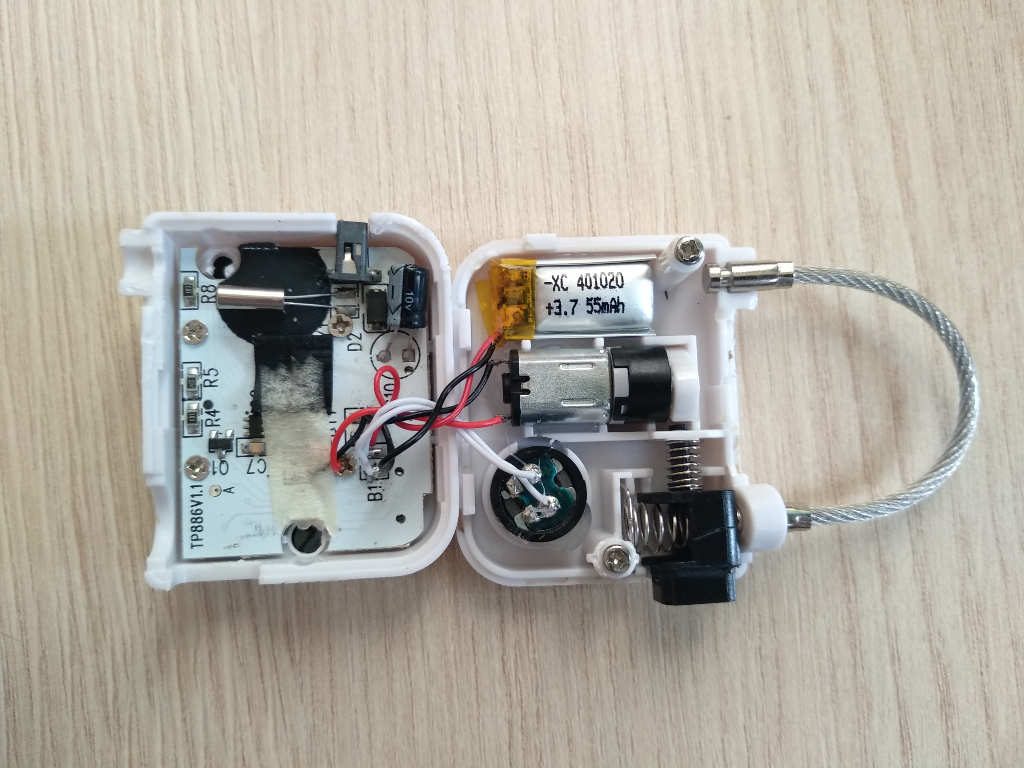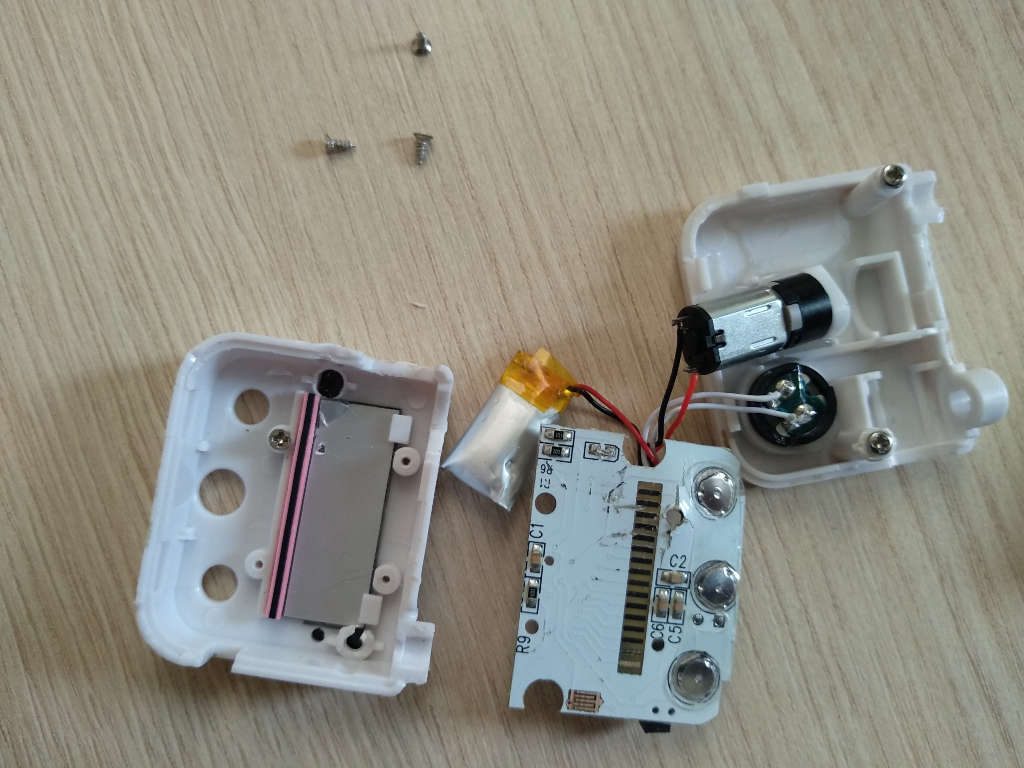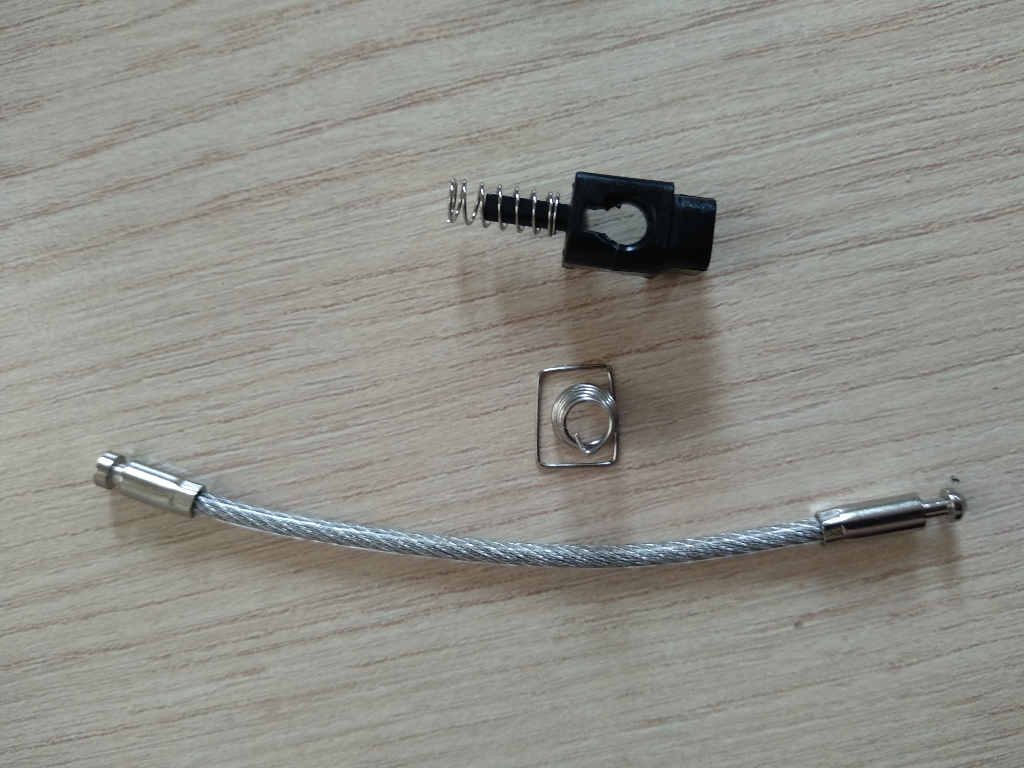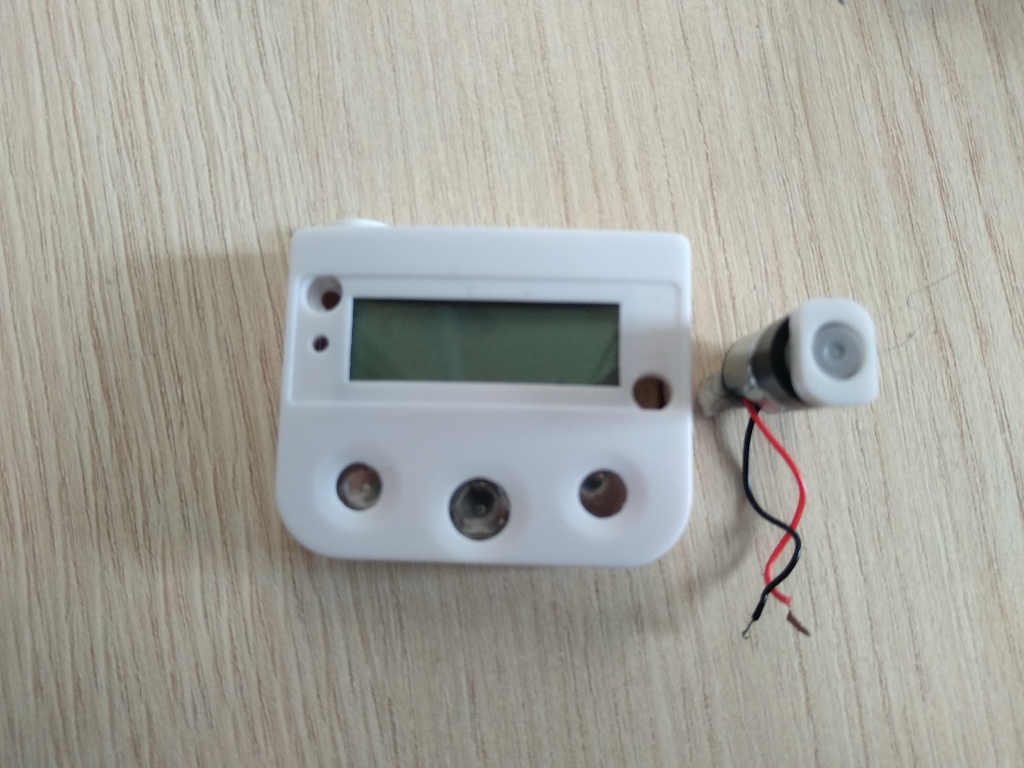Dissecting a cheap Time Release Lock
Some months ago I acquired a dead-on-arrival time release lock – the type that typically sells on Aliexpress and eBay for about US$20, appropriately described as “Multipurpose Time Lock” but more commonly “Fetish Electronic Timer” or, in the type of English unique to China “Adult Game Fetish Handcuffs”. Unfortunately there does not seem to be a lot of choice if you want an inexpensive electronically controlled time-release lock.
The issue with the unit I got my hands on was clearly a dead battery – as best I can tell the unit contains a small lithium polymer battery which must have been sitting in a state of discharge in a warehouse somewhere causing permanent damage – it no longer held charge.
As there were no apparent screws, I took to the unit with a thin screwdriver and excessive force. I record my discovery for creative soles who wish to either repair or modify one of these units – or even for those just curious as to how they are constructed. As a picture is worth 1k words, here is the 3k version –



My observations are as follows –
I could almost certainly have opened the lock without damaging brute-force had I known to peal the back the black frame surrounding the display. This would have revealed the 2 screws which were used to hold the unit together (I went in through the top of the unit where the cable fits in, and leveraged the unit apart with a screwdriver – breaking the lock in the process.
Similarly there are 4 small screws holding the circuit board to the frame. 3 screws are fairly apparent but I missed the fourth one which was hiding behind the tangle of wires to the bottom left of the unit. As lock was already dead, I used brute force again!
The battery is labelled as XC401020, 3.7 55mAh – so a 55mAh 3.7 volt battery. I’m not sure that there is place internally for a larger battery, but as its 3.7 volts I expect with some creativity it might be possible to jerry-rig a larger external unit if you can secure it properly. As far as replacement of the existing battery goes, a search for 401020 on Aliexpress revealed a plethora of replacement batteries starting at about US$5 including shipping and very quickly rising in price to a almost the replacement price of the lock.
NOTE THAT THIS PARAGRAPH IS SPECULATION. DO NOT RELY ON ANYTHING IN IT WITHOUT FIRST SATISFYING YOURSELF THAT IT IS CORRECT (corrections and confirmations welcome) – The core of the locking mechanism is a simple high torque motor with a rectangular shaped piece on the end. When this piece lies horizontally the lock is closed. When it is vertical the motor is open. When powered (looking from the top as per below image) the motor spins clockwise. This configuration does not appear to be a “fail open” arrangement I would have expected in this type of device- ie if the motor stops in the wrong position the lock will not be able to be opened without opening it or getting the motor to move. Conversely I posit ( As my unit is now totally destroyed I can’t test) it would be practical to modify the lock to self-release at the end of the lockout period by using an elastic band wrapped around the button to push it in automatically. In this instance it would still require force on the chain to remove it from the lock.
The below image shows the motor and screw holes once the front plate is disassembled.

Removed face-plate and top view of motor.